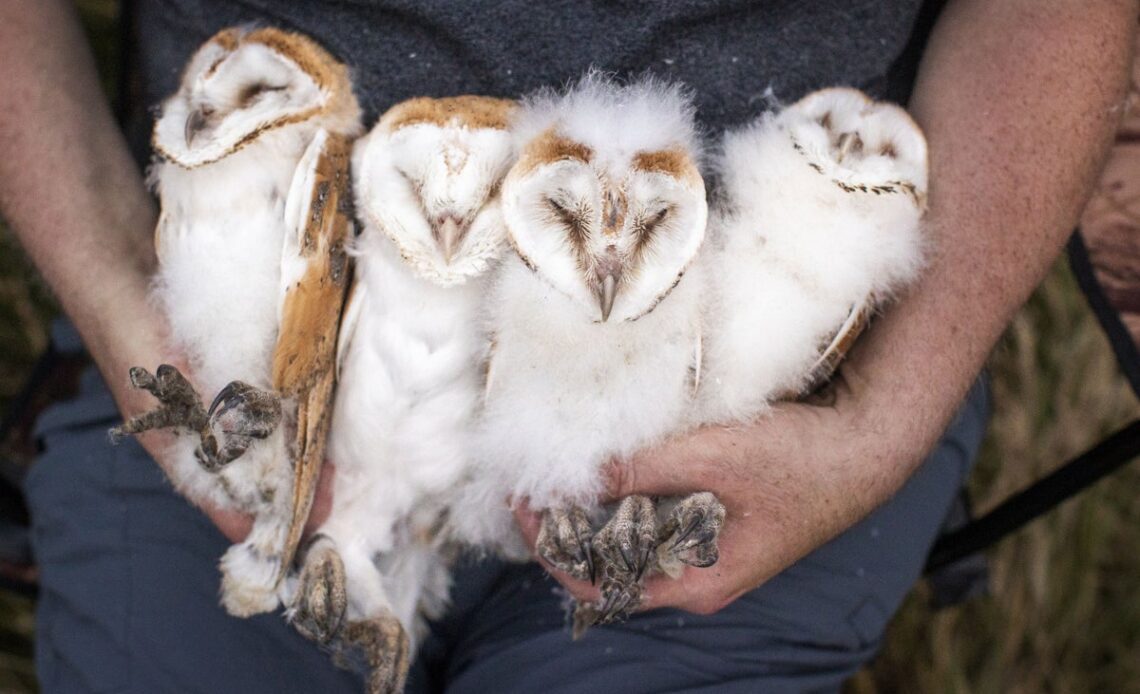Conservationists are celebrating a bumper year for barn owls in Northern Ireland.
Some 24 chicks fledged from eight known breeding pairs – a 500% increase in chicks from 2021 – according to Ulster Wildlife.
The figures are contained in the nature conservation charity’s 2022 barn owl report.
Two new nest sites were also discovered in Co Down, helping to boost the bird’s fragile population in Northern Ireland, which is estimated to be fewer than 30 breeding pairs.
Every time we think the population is increasing, we lose some of our breeding pairs, so this year’s news is very positive
Senior conservation officer Katy Bell
Ulster Wildlife said barn owls badly affected in 2021, when a wet spring and hot summer resulted in a poor breeding season.
Senior conservation officer Katy Bell described the latest numbers as very positive.
“After a troubled 2021, we are delighted to see the fortunes of barns owl changing and their numbers doing well,” she said.
“Every time we think the population is increasing, we lose some of our breeding pairs, so this year’s news is very positive.
“Barn owls need a number of things to survive: plenty of wildlife-friendly habitat on farms with enough small mammals to eat, places to nest and roost as well as climatic stability.
“All of these factors play a part in their success and a big part of our work to help this species recover is advising landowners and farmers on habitat improvements and putting up artificial nest boxes.
Sightings of these elusive birds are really important to help target our efforts so we would encourage anyone to get in touch
Senior conservation officer Katy Bell
“It is great to see this paying dividends in 2022, providing a welcome boost for our small and struggling barn owl population.”
Barn owls require areas of rough grassland, wild field margins and wild bird cover in order to hunt for small mammals, like mice and rats, taking refuge there.
Last year, the charity carried out 34 landowner visits to advise on ideal barn owl habitat and erected 20 manmade nest boxes in suitable locations to replace the loss of natural nesting sites in barns, old buildings and tree cavities.
During the summer, volunteers monitored 76 nest boxes across the countryside for signs of barn owl activity, such as regurgitated pellets and whitewash droppings, as well as surveying 11 potential…
Click Here to Read the Full Original Article at The Independent Travel…
